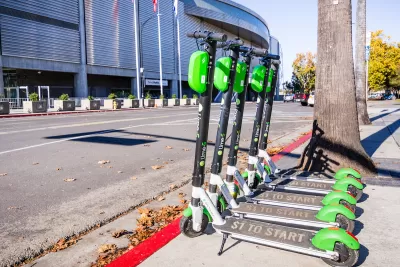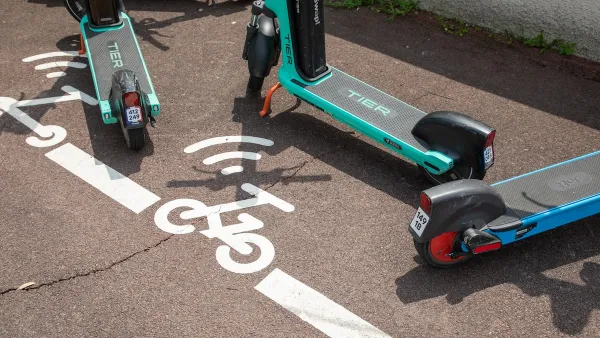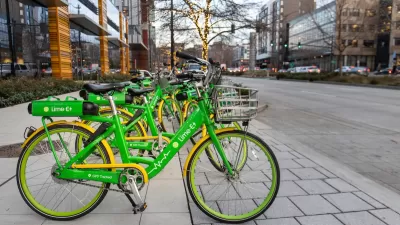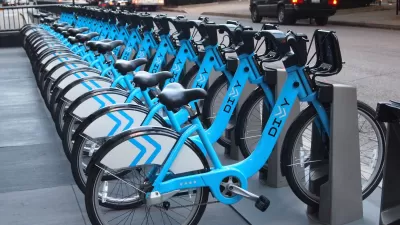Eight years after shared e-scooters were first introduced in US cities, the industry still teeters on the edge of success, hindered in part by limited infrastructure.

What’s the status of the U.S. e-scooter industry eight years after its launch? Syris Valentine assesses the landscape in an article for Grist, writing that “The true climate benefits of these fleets depends upon how companies deploy and manage them, and safety remains a concern as injuries climb. But industry leaders appear intent on ensuring their scooters are as sustainable and safe as possible.”
According to Valentine, researchers say that the two biggest factors that will determine the climate impact of scooters are how users ride them and how operators manage them throughout their life cycle.
If scooter rides replace walking, their impact on emissions will be minimal. “But several studies, including one by the Portland Bureau of Transportation and another, funded by Lime, by a German research institute, have found that though anywhere from a third to well over half of scooter users would have walked instead, enough other trips that would have been taken by car were not.” However, the energy and infrastructure — including large cargo vans — required to manage and redistribute scooters in many urban environments can negate some of their environmental benefits.
Meanwhile, the lack of safe infrastructure in most U.S. cities is a bigger obstacle that e-scooter operators don’t have control over: “with most American cities designed to promote cars over all other forms of transit, the health of scooter users is, like those of pedestrians and cyclists, at risk once wheels hit pavement.”
FULL STORY: 8 years into America’s e-scooter experiment, what have we learned?

Planetizen Federal Action Tracker
A weekly monitor of how Trump’s orders and actions are impacting planners and planning in America.

San Francisco's School District Spent $105M To Build Affordable Housing for Teachers — And That's Just the Beginning
SFUSD joins a growing list of school districts using their land holdings to address housing affordability challenges faced by their own employees.

The Tiny, Adorable $7,000 Car Turning Japan Onto EVs
The single seat Mibot charges from a regular plug as quickly as an iPad, and is about half the price of an average EV.

Seattle's Plan for Adopting Driverless Cars
Equity, safety, accessibility and affordability are front of mind as the city prepares for robotaxis and other autonomous vehicles.

As Trump Phases Out FEMA, Is It Time to Flee the Floodplains?
With less federal funding available for disaster relief efforts, the need to relocate at-risk communities is more urgent than ever.

With Protected Lanes, 460% More People Commute by Bike
For those needing more ammo, more data proving what we already knew is here.
Urban Design for Planners 1: Software Tools
This six-course series explores essential urban design concepts using open source software and equips planners with the tools they need to participate fully in the urban design process.
Planning for Universal Design
Learn the tools for implementing Universal Design in planning regulations.
Smith Gee Studio
City of Charlotte
City of Camden Redevelopment Agency
City of Astoria
Transportation Research & Education Center (TREC) at Portland State University
US High Speed Rail Association
City of Camden Redevelopment Agency
Municipality of Princeton (NJ)





























